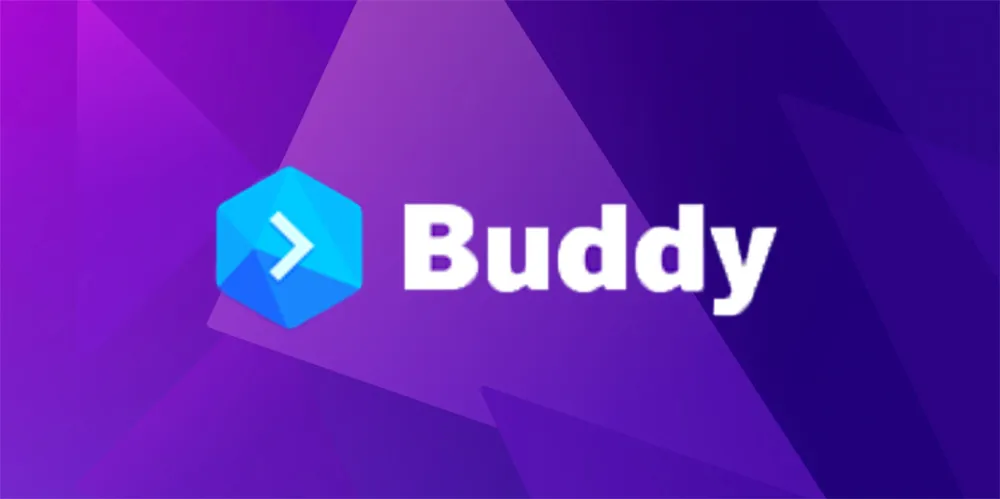
Project Introduction
Blockchain technology still a decade old is already gaining a lot of traction in its adoption and applications worldwide. Over the years a lot of companies have made entry into the cryptocurrency market, developing their own unique decentralized platforms, with the aims of offering varying types of services and providing solutions to different problems in the world today.
The year 2017, however, saw a rapid growth in the number of companies and platforms built around and on the blockchain. As at the time of writing this article, there are 2050 cryptocurrencies currently listed on the coinmarketcap, with thousands more still in the ICO or early post-ICO stages.
Problem Statement
A major problem that is common across the blockchain is the ease of manufacturing and designing decentralized applications. This problem has ultimately meant that there are a lot of decentralized projects which have the right ideas and concepts but have been let down by their application design.
Similarly, this is however also a major problem that large off-chain, proprietary organizations are also presented with. This large companies heavily invest their funds, time and personnel towards application automation (DevOps) in order to keep their applications at optimum working capacity, fix bugs, add new feature and important updates.
Application automation testing is very important for off-chain and on-chain applications alike, as it makes it easy to test new features, upgrades, recognize vulnerabilities in existing systems, improve its quality and make it safer during the development phase.
Application software is every platform's point if contact with their users, and if an application doesn't meet up to the required, there is a very big chance the users will be more inclined to use other applications that give a better user experience.
There is a momentous need for a platform that will act as an underlying infrastructure, striping the application automation process of its overwhelming technicalities and give developers the much-needed assistance and freedom to develop their applications. Buddy is the answer.
Buddy
Buddy is creating a decentralized development automation platform for applications making the development and automation of amazing applications a very easy task for developers. Buddy will allow developers and application designers to explore their creativity without the constraints of the high technical knowledge that is presently needed for applications development and automation.
Buddy's Vision
According to the project's whitepaper, the team's vision is to empower other developers worldwide by creating a platform capable of automating everything that can be automated in the application development process. The buddy vision is one that will empower the developers' community with a platform that will keep growing through technical inputs and add-ons by the skilled application developers in the community.
The Existing DevOps Problems For Off-chain Companies
Organizations face an uphill task of automating applications development because of some underlying problems. This problem includes
- Difficulty in adoption
- Difficulty in integrating together all the various technology stacks and workflow
- Problems with scaling the operational infrastructure
Source: Whitepaper
The Buddy Solution
Buddy is providing an innovative solution to the DevOps challenges that large organizations face through three major features on its decentralized platform. These features are:
- The DevOps Marketplace
- Private Automation Grid
- Shared Automation Grid
Source: Whitepaper
The DevOps Marketplace: As the name implies, this is a marketplace for DevOps automation actions. Buddy platform itself already made available over 80 automation actions to kick-start the marketplace and will allow developers to submit their paid or free automation actions to the DevOps marketplace. This actions will be curated nevertheless, in order to prevent flooding the marketplace with low quality, vulnerable or copied actions. Free add-ons will also be added to the marketplace in order to help grow the community.
Buddy has already partnered with some major companies which include Google Cloud Launcher, GitHub Marketplace, and Azure. The buddy DevOps marketplace is a part of this ecosystems.
Private Automation Grid: Due to the inability of companies to rely on distributed resources due to issues like security, reliability, and high delays. Buddy's private automation grid will be based on a trusted infrastructure capable of auto-discovery and auto-scaling.
Shared Automation Grid: in the cases where high-intensity automation tasks are required. Buddy instances are run on a shared closed loop of distributed resources. An example of the times a shared automation grid can be used is the development and automation of applications which are still in the testing phase. That are, however, DevOps actions that do not require the highest security.
The Existing DevOps Problems For Blockchain dApps
The Blockchain technology is still relatively now and unlike already existing operating systems like Android, iOS, Windows, Mac etc. This operating systems already have easy to use software development kits, that allows easy development of applications and software.
Development of smart contracts and decentralized applications, however, presents a big challenge for developers. This often results in loopholes, bugs, and weaknesses in the system which may potentially cause expensive problems for the users and the project itself.
The blockchain needs an enabling infrastructure that will make easier the work of developers and promote trust with the projects founders, sponsors and investors.
The Buddy Solution
The solution that buddy provides comes in three major features, namely:
- BlockchainOps
- dAppsOS
- Distributed BaaS
Source: Whitepaper
BlockchainOps: The first feature of the Buddy solution to dApps development problems comes in the form of a development automation feature for blockchain application, which a lot similar in theory to the development automation solutions for off-chain applications.
The blockchainOps Actions will be in the form of simple, easy to use actions which will serve as building blocks to an automation process that will allow, building secure applications, testing smart contracts for weaknesses, reviewing codes and much more, through simple clicks.
dAppOS: This will basically serve as a development environment which is not only used to develop applications but can also be used to simultaneously classify and perform different actions on the decentralized applications. With dAppOS comes a training tool, preview and staging environment, template marketplace which will all ensure the best experience for the developers.
Distributed BaaS: Baas is an acronym for "Blockchain as a service". This feature ensures that, for the blockchain developers, the blockchain when accessed for the purpose of development will not be in its most basic form. Rather developers will be able to choose the type of platform they need and build on it with a single click, either its financial, decentralized authentication, supply chain tracking application or more.
The Ecosystem
The Actors of the buddy ecosystem is are its users, the developers, and the experts. The developers put their skills to work by designing automation actions and submit them to the DevOps marketplace, either for a fee or for free. These submitted automated actions will then be curated by the experts, with the ones meeting the proper standards made available for the users. The users are application developers who will use the automation actions while developing their applications.
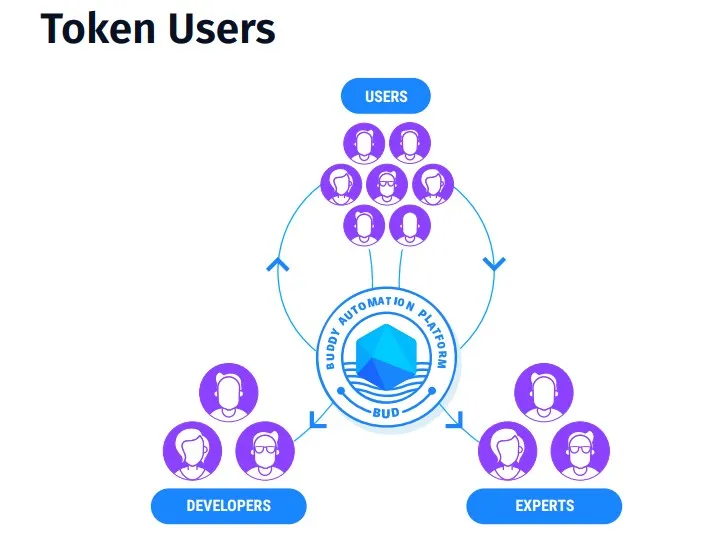
The ICO Token Details
The buddy platform's utility token BUD, will power the ecosystem serving the purpose of value exchange, a function enabling tool, a medium to access the platform's infrastructure and services and also a way to reap rewards for services provided.
Ticker; BUD
Protocol: ERC20
ICO Price: $0.1
Hardcap: $30 million
Total Token Supply: 670 million (500 million minimum)
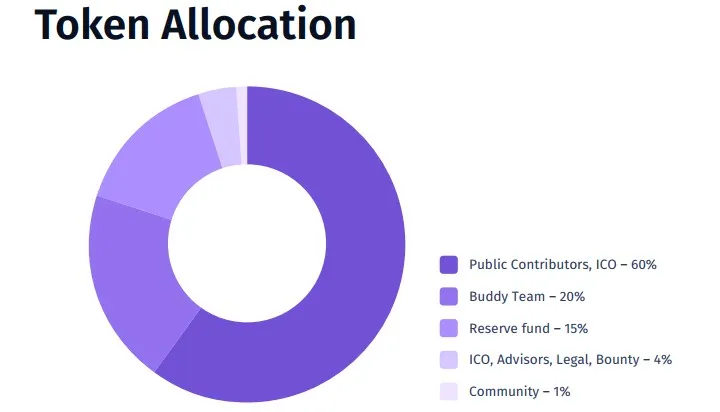
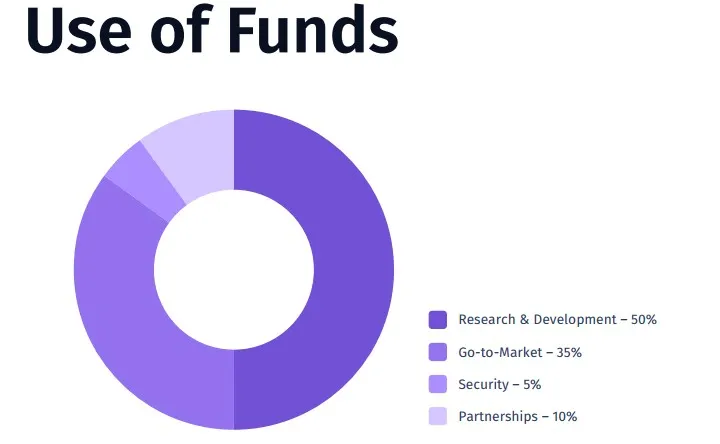
Progress So Far
According to the project's roadmap extracted from the whitepaper, the whole project development cycle will take a little over 3 years starting from Q3 2016. There was a proof of concepts of the "BlockchainOps" feature in Q4 2017 but the actual product will be released in Q4 2018.
The development cycle will end with the "shared automation grid" which will be available in Q4 2019. As far as working prototypes are concerned, three key aspects of the platform are already completed, and this includes; the automation pipelines, integration functions, and the sandboxes.
Below is the full highlights of the roadmap gotten from the Whitepaper
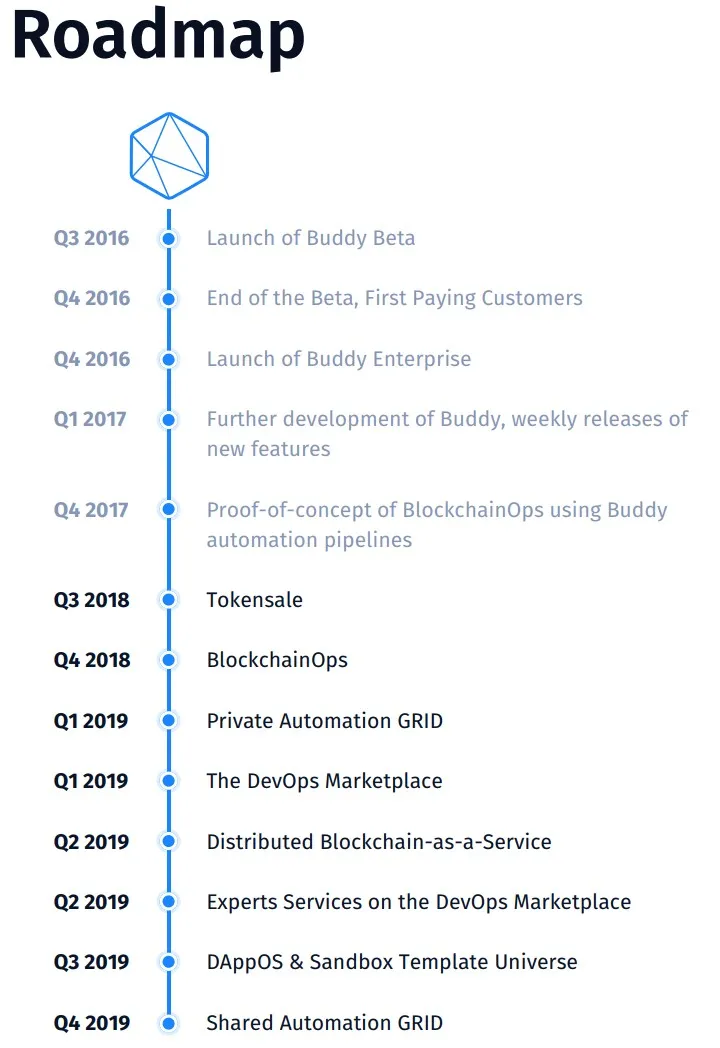
Team
The Buddy team is made up of 16 professionals with a lot of experience over different fields like business, the blockchain, IT, software, data analytics and more. The team leads are Simon Szczepankowski and Raphael Sztwiorok.
The full profile of all the team members is available in the project's Whitepaper.
Conclusion
Buddy as a decentralized project recognizes the development automation problems that application developers of both off-chain and blockchain-based applications face. This can easily result in the applications having shortcomings of different magnitude.
Buddy in its ecosystem has provided a decentralized solution for both sets of problems, allowing a developer friendly environment for application development. The Buddy solution is inexpensive and the ecosystem is built in a way that ensures continuous growth.
After a full review of this project has also shown that there is a highly experienced team behind it and they have made reasonable progress prior to their token sale.
In my personal opinion, I think the major factors of success for blockchain projects check out on this one, factors that include the concept, technology, team, community, and token economics. I believe if all these factors can be combined together to maximum effect, this project will be able to reach its set goals.
Disclaimer
This article has been written as a review of the Buddy decentralized platform. The contents of this article do not represent an investment advice. I am not a financial advisor and not in any way qualified to give investment advice, so I encourage that you do your own research before making any form of financial commitments to any blockchain project. Consult your financial advisor before making any form of investments, to be sure to abide by the rules guiding cryptocurrency investments in your jurisdiction and to be fully aware of the risks involved.
Official Contacts and Materials
Website: https://token.buddy.works/
Whitepaper: https://files.buddy.works/ico/BuddyWhitepaper.pdf
Onepager: https://files.buddy.works/ico/OnePager.pdf
Telegram: https://t.me/buddytoken
Bitcointalk ANN Page: https://bitcointalk.org/index.php?topic=3798597
Facebook: https://www.facebook.com/gitbuddy/
LinkedIn: https://www.linkedin.com/company/10293199
Twitter: https://twitter.com/buddygit
Reddit: https://www.reddit.com/r/buddyhq/
GitHub: https://github.com/buddy-works
Medium: https://medium.com/@BuddyWorks>
Reference
- Wikipedia.org. (2018). DevOps. [Online] Available at: https://en.wikipedia.org/wiki/DevOps [Accessed 19 Oct. 2018].
- Coinmarketcap.com. (2018). Cryptocurrencies. [Online] Available at: https://coinmarketcap.com/all/views/all/ [Accessed 19 Oct. 2018].
- Token.buddy.works. (2018). [online] Available at: https://files.buddy.works/ico/BuddyWhitepaper.pdf [Accessed 19 Oct. 2018].
- Token.buddy.works. (2018). [online] Available at: https://files.buddy.works/ico/OnePager.pdf [Accessed 20 Oct. 2018].
- Token.buddy.works. Decentralized Application Development Automation | Buddy (2018). [online] Available at: https://token.buddy.works/ [Accessed 20 Oct. 2018].
Connect with me on bitcointalk here>>
My Bitcointalk profile: https://bitcointalk.org/index.php?action=profile;u=1556229
If you like my article kindly Upvote, drop your comment or question in the section below.
Thank you.